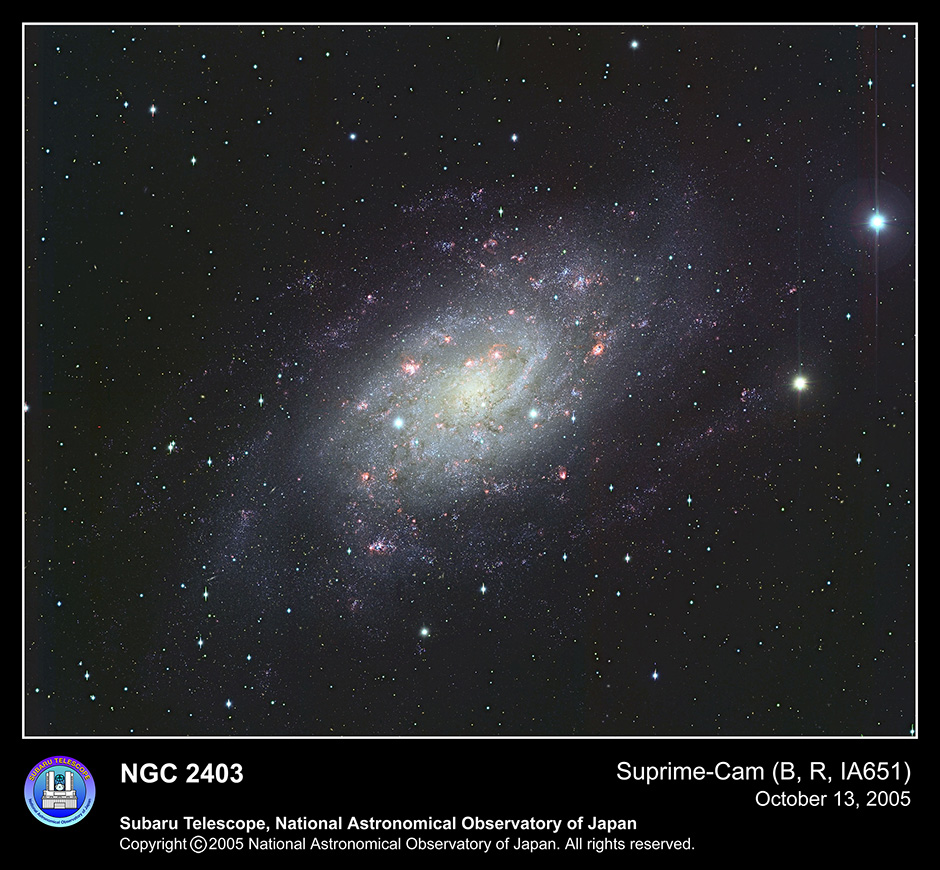Spiral Galaxy NGC 2403
Astrophotography・

This is a photo of the spiral galaxy NGC 2403, which is located about 9.8 million light-years away in the direction of the constellation Camelopardalis. This galaxy is located relatively close to the Celestial North Pole in the night sky, above the head of the constellation Ursa Major. Many spiral galaxies have a “bulge,” a bright distinctive protrusion in the center. However, the bulge of this galaxy is not outstanding and it looks slightly elongated rather than round. A galaxy whose bulge is elongated into a bar shaped structure is called a “barred spiral galaxy.” But, NGC 2403 is classified as an “intermediate spiral galaxy” which is a transitional type between the “spiral galaxies” and the “barred spiral galaxies.”
Galaxies Including Large Amounts of Hydrogen Gas
Many red nebulae (hydrogen ionization regions) stand out in the disk. Also, many young blue stars shine in the spiral arms. Therefore, we know that star formation is active in the spiral disk. In addition, you can see many dark bands formed by interstellar dust along the arms. It is conceivable that there exists a large amount of neutral hydrogen gas, which is the material for forming stars. Detailed features of such galaxies emerge from the complete image of NGC 2403 captured by the Subaru prime focus camera (Suprime-Cam).
Text: Tomoko Ono (Public Relations Center, NAOJ)
Translation by: Hiroko Tsuzuki and Ramsey Lundock (NAOJ)
Image Data
| Object | NGC 2403 |
|---|---|
| Telescope | The Subaru Telescope |
| Instrument | Suprime-Cam |
| Wavelength | B band (0.45μm: blue), R (0.65μm: green), IA651 (0.651μm: red) false color image |
| Exposure | 960 seconds (B), 480 seconds (R), and 480 seconds (IA651) |
| Date | October 31, 2002 (B), November 5, 2002 (R), and October 30, 2002 (IA651) (UT) |
| Credit | National Astronomical Observatory of Japan |
Download
- Medium resolution (940 x 870, 270KB)
- High resolution (2000 x 1852, 908KB)
- Maximum resolution (4220 x 3908, 2.3MB)